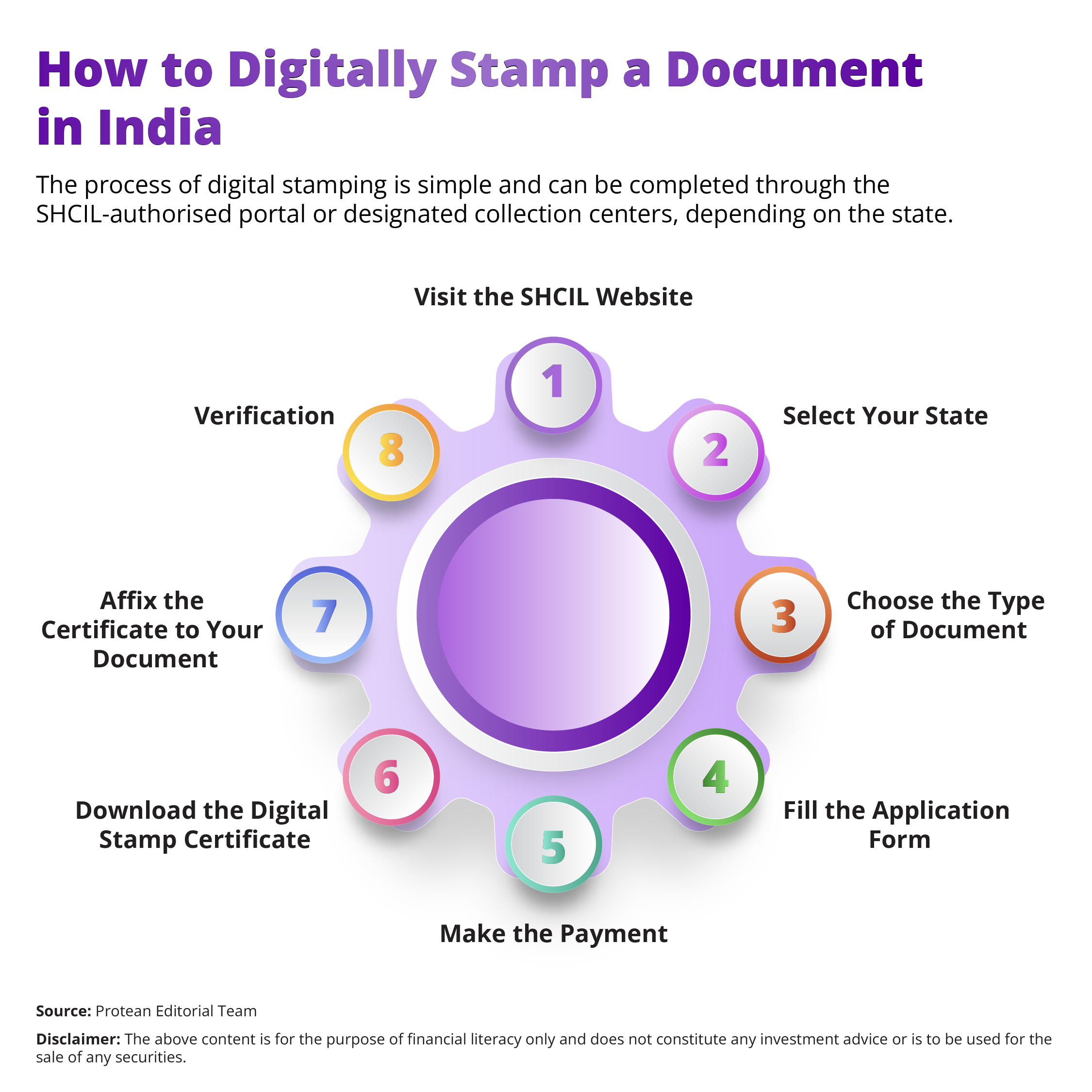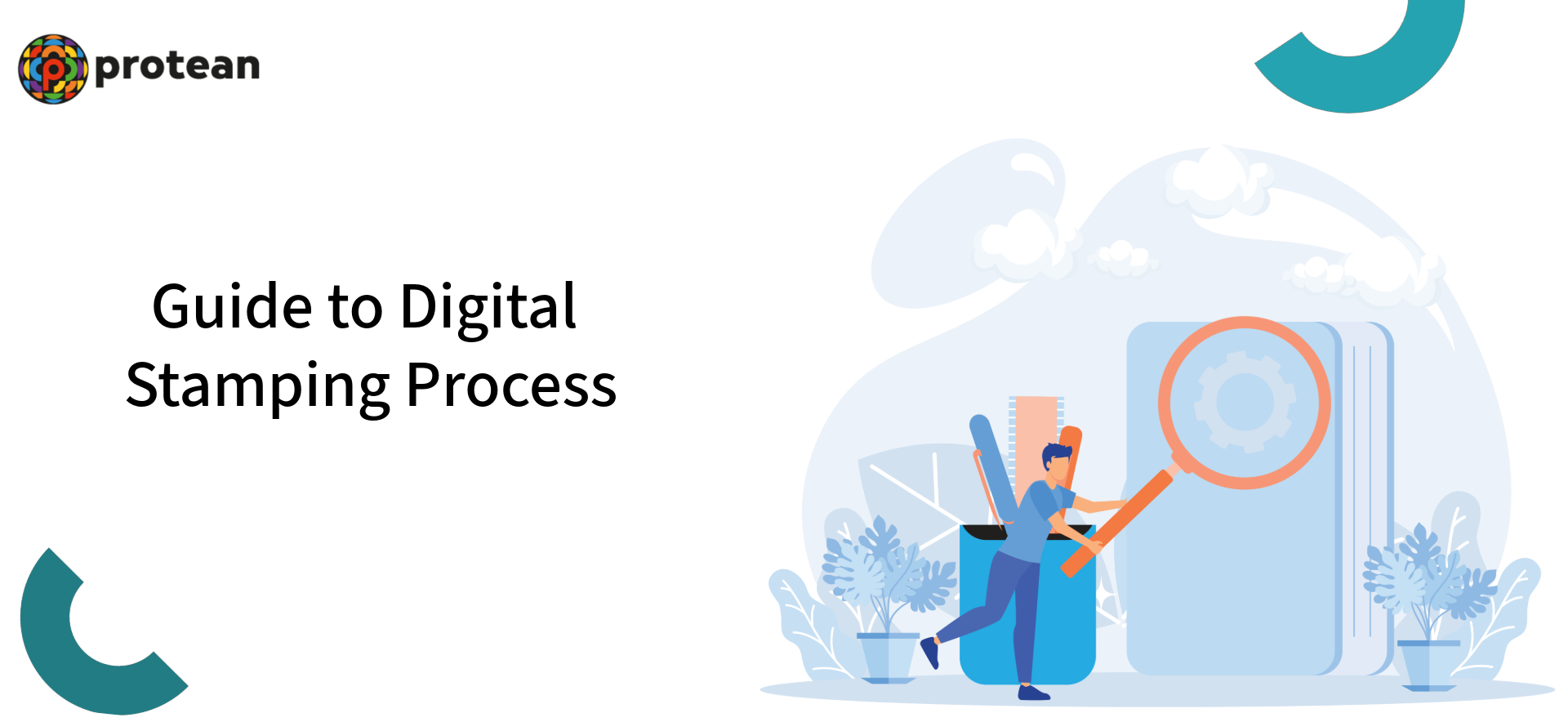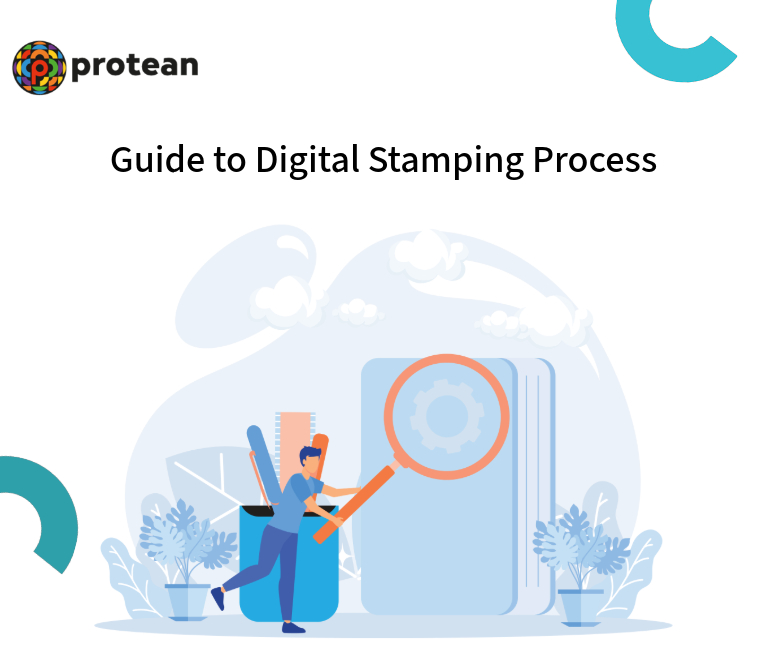Have you heard about a digital stamp?
Before we discuss the digital stamping process in India, let’s revisit traditional stamps.
In India, stamp duty has long been paid using physical stamp papers or through franking machines. These stamps often lead to the risk of:
- Manual intervention
- Logistical delays
- Risk of counterfeit documents.
The rise of digital stamping has aimed at resolving these limitations. Let us learn more about the digital stamp.
What is Digital Stamping?
Digital Stamping is the electronic method of paying non-judicial stamp duty to the government. This digital solution can replace the need for physical stamp papers. It can offer a convenient and secure way to fulfill statutory obligations. The purpose of stamp duty is defined under the Indian Stamp Act, 1899. It is to validate transactions such as agreements, deeds, and leases in a legally enforceable manner.
The Stock Holding Corporation of India Limited (SHCIL) acts as the Central Record Keeping Agency for digital stamping.
It manages the online platform through which users can pay stamp duty and obtain an digital stamp certificate. This certificate carries legal validity and is treated as proof of payment. It includes major details such as:
- Certificate number
- Issue date
- Amount paid.
Digital Stamping Vs Traditional Stamping
Let us learn about points in focus for Digital Stamps vs traditional stamps:
Convenience and Accessibility
With digital stamping, users can pay stamp duty online at any time from any location. This can eliminate the need to visit banks, franking centers, or licensed stamp vendors.
Speed and Efficiency
The digital process can enable instant generation of the digital stamp certificate. This can reduce turnaround times and streamline workflows for legal, financial, and real-estate professionals.
Enhanced Security and Authenticity
The Unique identification number on digital stamps can make tampering or duplication virtually impossible. Users can verify the authenticity of the certificate through a dedicated module on the SHCIL website.
Cost-Effectiveness
Going digital with Digital Stamping helps users save on physical logistics costs and reduces errors, minimising rework and document rejection.
Transparency and Auditability
Digital transactions create a clear audit trail. The digital stamping system can automatically maintain records of each certificate issued. This can be referenced in the event of legal scrutiny or regulatory audits.
Environmental Impact
Digital Stamping supports sustainability by reducing the use of paper and promoting eco-friendly business practices.
Digital stamping is completely electronic. This is unlike franking, which requires a machine and on-site validation, or physical stamp papers, which are prone to misuse.
How to Digitally Stamp a Document in India

Here are the steps:
1. Visit the SHCIL Website
Go to https://www.shcilestamp.com. This is the official portal for digital stamping in India.
2. Select Your State
Since stamp duty rules vary by state, select the appropriate state from the dropdown menu. This ensures the correct application of duties and procedures.
3. Choose the Type of Document
Specify the document category for which you want to pay stamp duty. Common categories can include agreements, affidavits, lease deeds, and power of attorney.
4. Fill the Application Form
Enter the required details such as the name of parties involved, document type, transaction amount, and stamp duty amount. The system may calculate the duty based on the transaction type and state rules.
5. Make the Payment
You can pay using online methods such as net banking, debit cards, or UPI. In some states, offline options through authorised collection centers may also be available.
6. Download the Digital Stamp Certificate
After successful payment, the system generates a digital certificate. Download and save the certificate for further use.
7. Affix the Certificate to Your Document
The digital stamp certificate should be printed and attached to the first page of the document. Ensure the content of the certificate matches the details in your document.
8. Verification
Verify the certificate using the SHCIL verification tool. Enter the certificate number and transaction details to confirm its validity.
E-SignPro is the modern way to authenticate documents; read more here.
Digital Stamping Best practices
You can follow these best practices while using a digital stamp:
- You need to ensure that the digital stamp certificate is properly affixed to the corresponding document for legal enforceability.
- Use the official SHCIL portal to verify every certificate.
- Check the local regulations before proceeding for state-level variations.
- Combine digital stamping with digital signature platforms for a completely paperless workflow, enhancing speed and reducing physical dependencies.
Conclusion
Digital Stamping in India represents a legally recognised and technologically advanced alternative to traditional methods of paying stamp duty. Offering convenience, efficiency, and enhanced security, it provides clear advantages over physical stamping or franking.
Digital Stamping has emerged as a vital solution for professionals and individuals seeking a dependable and compliant means of document execution. In today’s digitally driven economy, the ability to digitally stamp documents is not merely a procedural capability but a strategic enabler, facilitating transparent, streamlined, and paperless transactions across sectors.
Stamping a document requires just a click! Add details like name, emblem, department, date, and/or QR code for validation to your stamp to get going. Use Protean eSignPro to upload stamps made with a digital stamp maker online, now.

